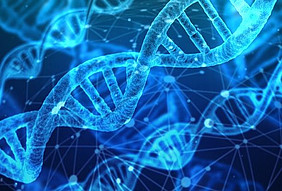For the first time, an interdisciplinary Munich research team under the leadership of TUM scientists has succeeded in correcting a mutated dystrophin gene in living pigs.
In Duchenne Muscular Dystrophy (DMD), which has been incurable up to now, the essential muscle protein dystrophin is missing, which causes the muscles of the patients to gradually regress. Due to concomitant respiratory and cardiac failure, the majority of patients does not reach the age of 40. DMD affects mainly boys, since the responsible mutations are located in the dystrophin gene on the X chromosome.
The researchers at Technical University of Munich (TUM), Ludwig-Maximilians-Universität München (LMU) and Helmholtz Zentrum München were able to cut the defective gene sequence from the DNA of the muscle and heart cells of the animals using modified CRISPR/Cas9 scissors. The results have been published in the journal Nature Medicine.
"These gene scissors are highly efficient and specifically corrected the dystrophin gene," says Prof. Wolfgang Wurst, developmental geneticist at TUM and the German Research Center for Environmental Health. It became then again possible to viably read the gene which had been unreadable because of the genetic defect, thus allowing for a successful protein biosynthesis. Now the shorter but stably formed dystrophin protein was able to improve muscle function. The animals treated were less susceptible to cardiac arrhythmia and had an increased life expectancy compared to animals with the disease that did not receive the therapy.
The change in the genome of the heart muscle cell has a permanent effect, as Prof. Christian Kupatt, cardiologist at at university hospital TUM Klinikum rechts der Isar, explains: "Muscle and heart cells are long-lived cell structures. One half of all myocardial cells remain functional from birth throughout the entire lifecycle of a human being. The genome of a cell is used for protein biosynthesis as long as the cell is alive, and once a cell has been affected by the therapy, it remains corrected. So if we change the genome of a myocardial cell, the correction is a long-term success, in contrast to the results of previous methods."
"Our results are very promising, since for the first time, we have now been able to demonstrate therapeutic success in a clinically relevant large animal model," says Prof. Maggie Walter, neurologist at the LMU university hospital. In terms of important biochemical, clinical and pathological changes, the pig model mirrors Duchenne muscular dystrophy in humans. "Since the disease proceeds faster in our pig model, we were able to verify the efficacy of the therapeutic approaches within a manageable period of time," says Prof. Eckhard Wolf, LMU specialist in veterinary medicine.
Publication:
Moretti, A., et al., Wolf, E.; Wurst, W., Kupatt, C.: Somatic gene editing ameliorates skeletal and cardiac muscle failure in pig and human models of Duchenne muscular dystrophy. In: Nature Medicine, 27 January 2020.
DOI: 10.1038/s41591-019-0738-2

